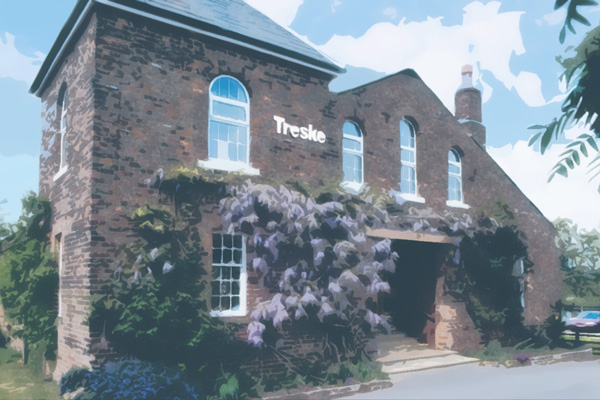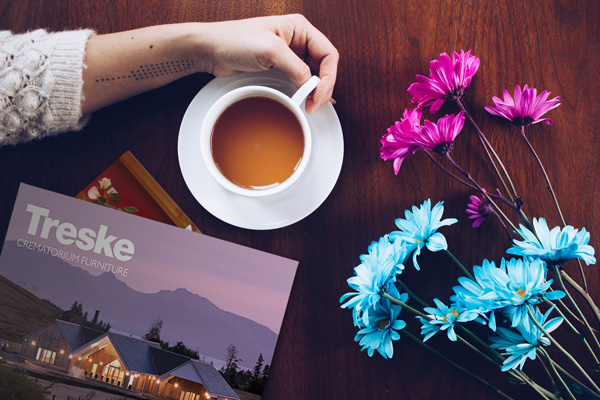Timber Sourcing and Policy
Treske take great care to only use timber that is ethically grown and sourced. The problems with sourcing have mainly been associated with tropical timbers, which we avoid as manufacturers as we believe that very few of the schemes can adequately cover these kinds of timbers from regions where deforestation is the major environmental issue. We do not use suppliers who cannot certify their timber!
The European oak, and most of the other timbers we use is FSC (Forest Stewardship Council) and PEFC (Programme for the Endorsement of Forest Certification) certified. FSC is one of the most trusted international timber certifications with components including both woodland management and a chain of custody. Although we are not able to FSC certify the timber we use ourselves, our suppliers can so if asked we can prove it to a customer that their timber was FSC sourced. The forest management part of the certification is about careful and long term forest management and is assessed independently to check it reaches agreed standards. Certification guarantees that the timber comes from well managed forests. Our timber suppliers are part of the chain of custody of the timber ensuring that FSC timber has been checked at every stage of its processing.
At the beginning of the 20th century, 5% of land area in Britain was woodland; it is now 10% and growing - as members of Woodland Heritage, Treske are proud to support and encourage this growth. The British, European and American hardwoods we use are hand selected and come from sustainable forests where new trees are planted to re-stock the woodlands.
Oak
Oak
The most British of woods. Correct timber selection, furniture design and cabinet making skills produce really special results. Light brown to golden brown in colour, the timber itself is usually very straight grained and has distinctive growth rings and medullary rays that show to great effect with particular cuts of timber.
Treske often fume oak to react with the resins causing the timber to darken. This natural process helps show off the patina of the timber and can lead to very pleasing finishes. Customers at Treske can see examples of this when deciding on how they would like their furniture finished.
Ash
Ash
Treske was founded using locally grown Ash and still makes furniture using this coarse straight grained and very tough timber. Unlike the elm disease, it is thought Ash is genetically diverse enough to survive Ash Dieback Disease and will remain a feature of our countryside for generations to come.
Ash is characterised by a wide colour range from the whites of the outer layers to the dark olive brown of the heart wood. This colour variation can be used to great visual effect on tables. As with oak, ash can be stained to different colours often to match a client's existing furniture.
Elm
Elm
Sadly this tree which dominated much of the landscape has virtually disappeared in much of England due to Dutch Elm disease. Happily elm is available from colder areas of the UK and makes wonderful furniture.
The wood is coarse textured, the grain is boxy and often highly coloured, but it finishes into delightful character furniture.

Elm The epitome of native timber
Maple
Maple
Grown in Canada and the USA this hard maple is heavy, with a straight grain and fine texture that finishes very smoothly.
The timber grain patina is similar to Cherry & Sycamore but on finish is a warm pale almost white colour. Heartwood can be darker brown. Often used as a veneer, especially timber that shows a latticework of knots – Birds Eye maple - excellent within wardrobe and kitchen doors to show off this special feature.
Sycamore
Sycamore
A tree that is often considered a weed can be made into lovely fine textured creamy golden white furniture. Sycamore is a softer alternative to maple and over time develops more of a golden colour to the more orangey colour of maple.
A quirk of Sycamore is that it is felled in the winter months before sap has started to move up the trunk. If felled too late the sap produces a green colouration within the timber - it is for this reason that the planks are traditionally dried standing up on end.
Walnut - American Black
Walnut - American Black
This north American plantation grown hardwood is a tough fiberous timber that finishes smoothly and makes for very nice furniture. Often used in conjunction with oak as a compliment, this wood is a rich dark brown to a purple black colouration.
Current bedroom and kitchen trends are resulting in the use of more of this timber, to produce modern and stylish furniture.
Walnut - European
Walnut - European
Walnut had a golden age in British furniture making, ended by a succession of cold winters and the import of mahogany as an alternative. Many people will recognise walnut as the timber used for gunstocks and for special pieces of furniture.
This is a truly special timber with a delicious range of brown and grey creamy colours. The amount of feature depends on where the tree was grown, the best being British. The timber is bought in log form (boules) to ensure that timber remains well matched.

Walnut - European Easy working rare and beautiful hardwood
Cherry - English
Cherry - English
A native cherry found across the UK and Europe that is similar in characteristic to American Cherry with one important difference – colour. The colour is a pale pinkish green brown and when finished in a natural lacquer is very fine. The timber can be stained successfully and the underlying fine grain gives great character to this timber.

Cherry - EnglishSmooth finishing fine grained timber
Cherry - American
Cherry - American
A straight grained hardwood with a smooth texture that enables a fine finishing to furniture. Grown in North America this timber is characterised by a colour change in light from pale green-brown to a deep rich orange red. The initial colour change is so fast that objects left on and protecting a surface from light will leave a light outline that will even up once the area is exposed to light. The timber is also characterised by small darker sap pockets within the wood.

Cherry - AmericanNorth American straight grained hardwood


Beech
Beech
A traditional cabinet making and high class timber, loved for its straight grain and fine even texture. Colours are generally very pale creamy white to a pinkish colouration.
As with ash, beech is often used in chairs, especially where a bent wood shape is required. Treske frequently use beech for drawer boxes as well as individual pieces of furniture.



















